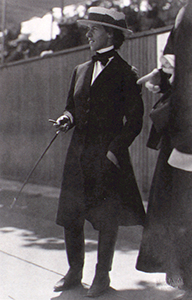
(Marion DuPont Scott, owner of Montpelier for 55 years, longer than any other).
The DuPont Family owned the house for nearly a century, and they made massive, though unobtrusive alterations to the existing Montpelier mansion. That dwelling had been sanitized with the demolition of the slave quarters off the right wing of the structure and the addition of a regulation track for thoroughbred racing, and a sweeping steeplechase course every bit as grand as the one to the north at Great Meadow.
There is a private train station out by Rt. 20- Montpelier must have been grand indeed when the DuPonts ran the place. William DuPont would commute from to his chemical company in Delaware each Friday and Monday morning, and the train would stop just to pick him up.
After the deaths of her mother in 1927 and her father in 1928, Marion kept most of the home the way her parents had decorated it. The docent on the tour- the one who had part of his lunch still on his face- mentioned the Art Deco-inspired Red Room that featured photographs of her champion horses, and the indoor weather vane, which he said was to help determine where to ride to the hounds.
Marion was responsible for the racetracks and the equestrian center, and was renouned as the first women to compete astride her steed, rather than riding in a ladylike side-saddle. Her celebrated horse Battleship cantered out to become the first American horse to win the 1938 British Grand National steeplechase race.
Of course, the historic nature of the estate is what the Preservationists were interested in, not the upgrades of the 20th Century, so when the property was transferred on the death of Marion DuPont, the provisions of the bequest directed the National Trust restore the house to its appearance and furnishings in the times of James Madison.
The Madison family had the place for three generations. In 1723, James Madison’s grandfather Ambrose received a patent for 4,675 acres of land in the Piedmont of Virginia. Ambrose, his wife Frances Madison, and their three children moved to the plantation in 1732, naming it Mount Pleasant. Ambrose died six months later; according to court records, he was poisoned by three enslaved blacks.
Montpelier Mansion started as a boxy colonial structure erected by the President’s Grandfather, and later upgraded with a neo-Palladian columned porch and two lower wings on each end.
Along the way in her eight decades in the house, Marion had two marriages but no children. She died in 1983. In her will, she transferred Montpelier to the National Trust for Historic Preservation, noting that it was “appropriate … to restore the mansion house in such a manner as to conform as nearly as possible with the architectural pattern which existed when said property was owned and occupied by President Madison.”
That is the place you see today, as former President Madison would have known it when he left office in 1817 and returned to the estate, which had been struggling under the inept management of Dolly’s son by her first marriage, whom Madison had adopted.
The life and times of James Madison are extraordinary. There is so much for which he was directly responsible; service in the Commonwealth House of Burgesses, the Continental Congress, the Federalist Papers, the Constitution, the Bill of Rights, the Louisiana Purchase (as Jefferson’s Secretary of State) and then two terms as President.
A slight man, shortest of all the Presidents, he still cast a giant shadow. And so did his wife. Dolley was 49 when they returned to the country. In Washington, she had invented the concept of the First Lady, standing in as the entertainment czarina for President Jefferson, and then presiding at table for the two terms of her husband’s Administration.
Quite unlike today, Madison left office with less money that when he arrived. It was quite a different world then, when legislators and statesmen did not parley their offices into vast personal fortunes.
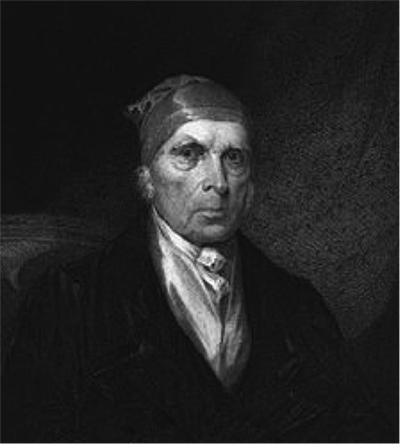
(Portrait of Madison, age 82, c.1833)
Some historians speculate that Madison’s mounting debt was one of the chief reasons why he refused to allow his notes on the Constitutional Convention, or its official records which he possessed, to be published in his lifetime.
He knew the value of his notes, and wanted them to bring money to his estate for Dolley’s use as his plantation failed—he was hoping for one hundred thousand dollars from the sale of his papers, of which the notes were the crown jewels.
He could not sell the papers for anything like that in Philadelphia or New York. Eventually, Congress authorized $30,000 to be paid to his widow. Madison’s financial troubles weighed on him, and deteriorating mental and physical health would haunt him through his last days.
At one point, Montpelier had 108 slaves on the property, and Madison made no effort to free them due to his fiscal problems. One of the featured narratives of the great house is the relationship with his enslaved manservant, Paul Jennings, who was with Madison in 1836 when the last of the Framers passed.
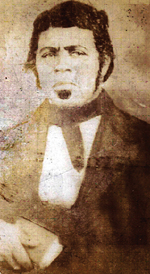
(Madison’s slave and valet Paul Jennings at Montpelier).
Paul Jennings had been born into slavery and served the future President all his life. He served in the White House and continued to serve Madison as his valet at Montpelier. Jennings married Fanny, a slave held on another plantation, and they had five children, who lived with their mother.
Jennings got Sundays off, and walked the sixteen miles to and from the plantation where Fanny was held every week.
In 1837, Dolley took Jennings with her when she returned to Washington, DC. Jenner was forced to leave his family behind, though he was permitted to visit them occasionally. In 1841, she wrote her will, which would free Jennings after her death, the only slave whom she freed in her will, though it ultimately did not work out that way..
In Washington as an adult, Jennings saw a much broader community. Among its many free blacks at the time were descendants of slaves of the former presidents Washington, Jefferson, and Madison.
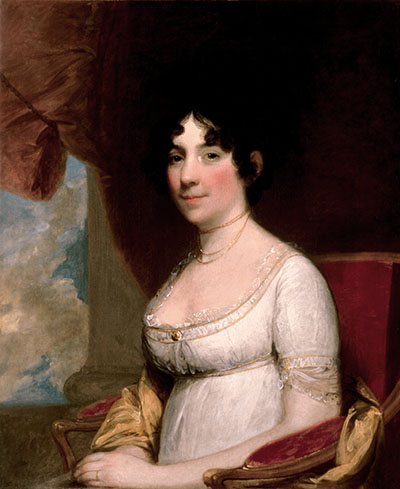
(Dolley Madison in better times. Upon her death, her body stayed in the “visiting” tomb at Congressional Cemetery in the District before eventually being interred with her husband at Montpelier).
Struggling financially, in 1844 Dolley Madison sold Montpelier and all its property, including its slaves, to raise money on which to live. That year Fanny died, and the following year, Dolley Madison hired out Jennings to one of my favorite Presidents, James K. Polk. Often, in such arrangements, slaves got to keep a portion of their earnings, but she kept it all, being desperate for cash.
Fearing for his future, Jennings tried to arrange a purchase price with Madison, but she sold him to an insurance agent for $200 in 1846. Six months later, Massachusetts Senator Daniel Webster intervened to buy him from the new owner for $120 and gave Jennings his freedom, for which he paid the Senator in work.
At that time, Jennings entered the large free black community of Washington, which outnumbered slaves by three to one at the time. His signal accomplishment came in 1865, when he wrote the first memoir about life inside the White House, A Colored Man’s Reminiscences of James Madison.
Of all the larger-than-life people who lived in that house in Orange, Paul Jennings might be considered the most interesting.
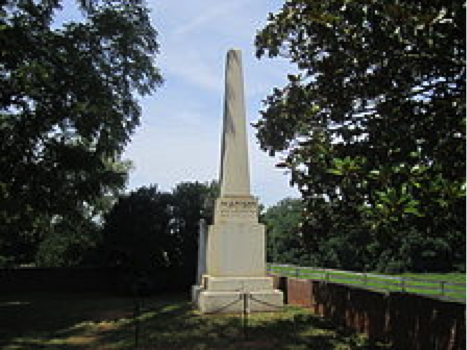
(Madison’s tombstone, Montpelier. Dolley eventually made it there, too).
Copyright 2014 Vic Socotra
www.vicsocotra.com
Twittere: @jayare303
